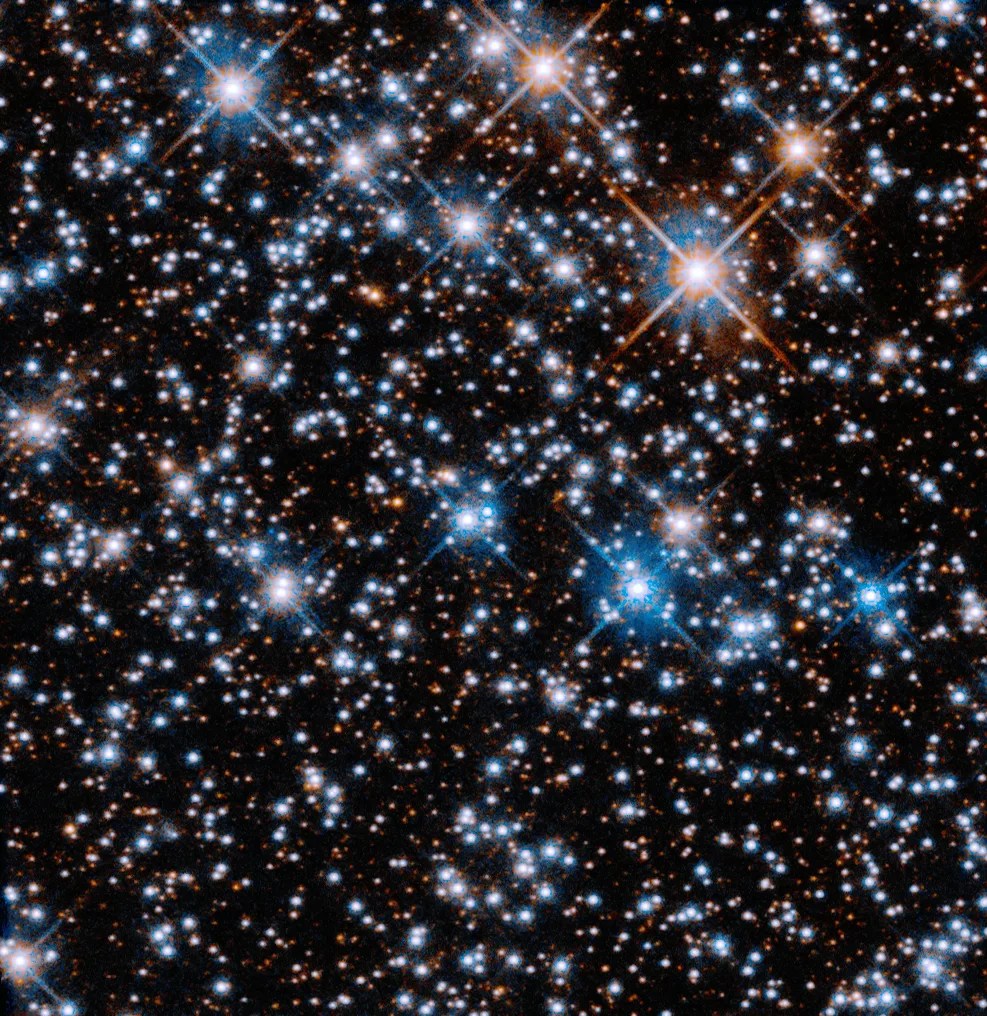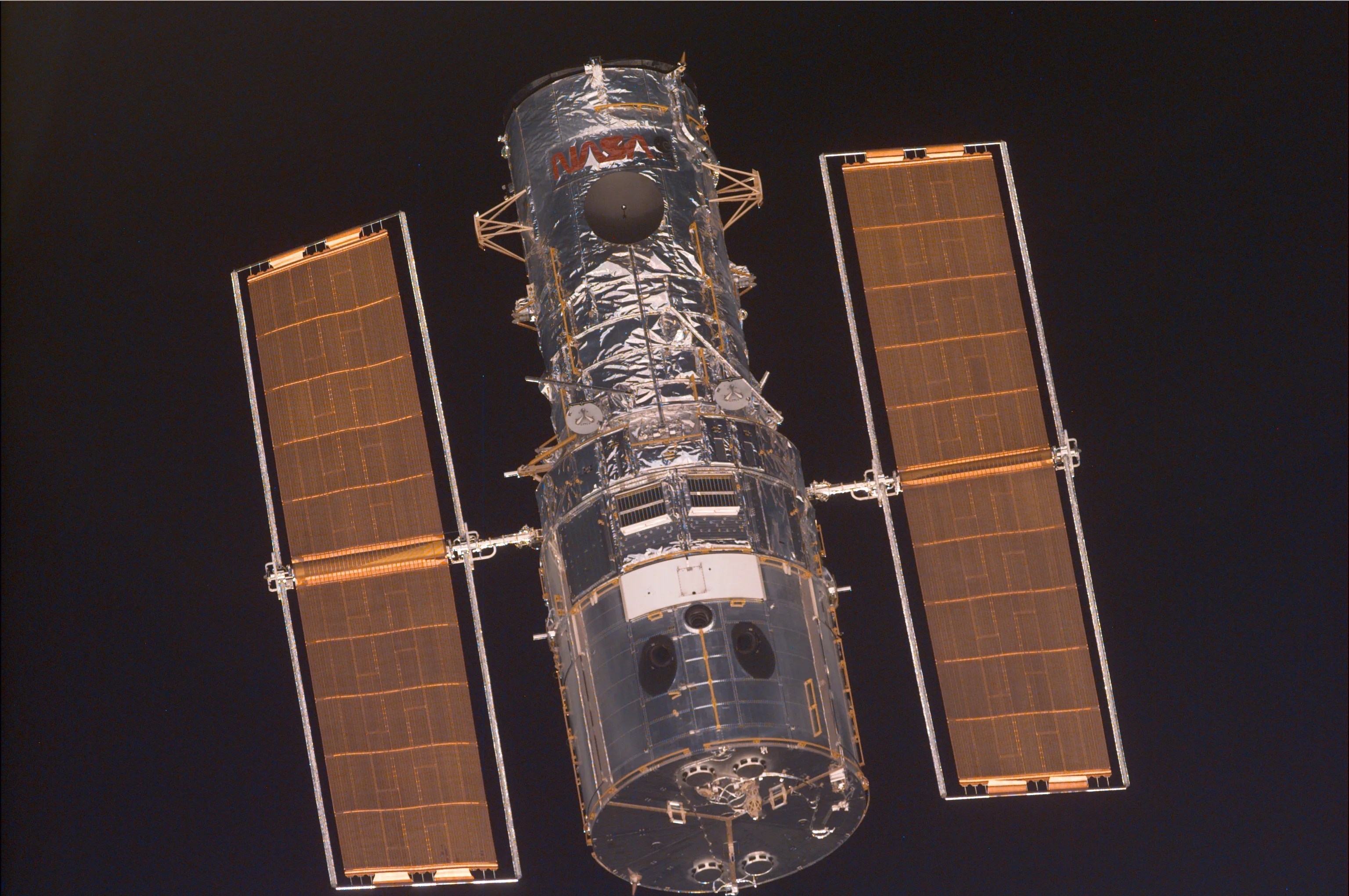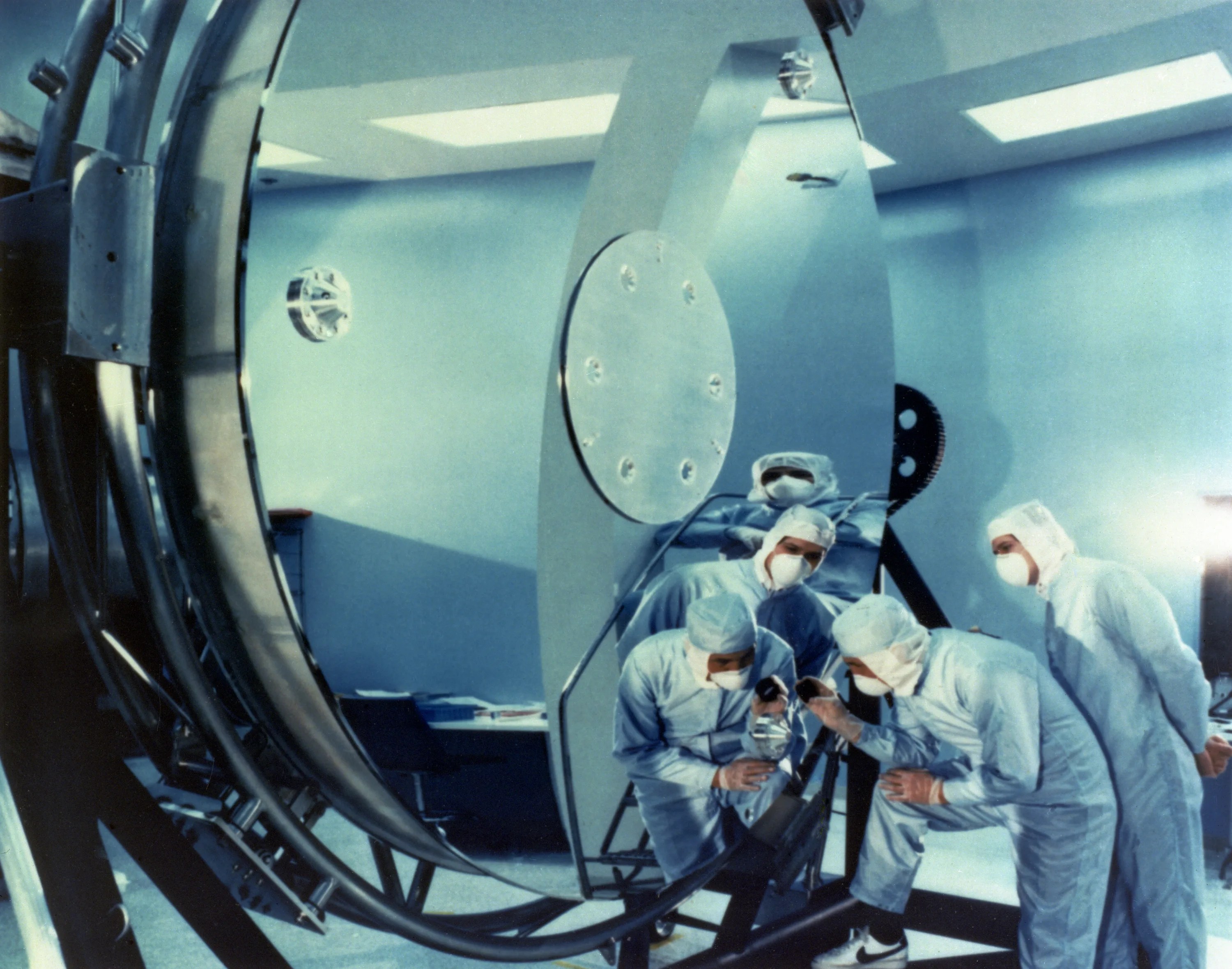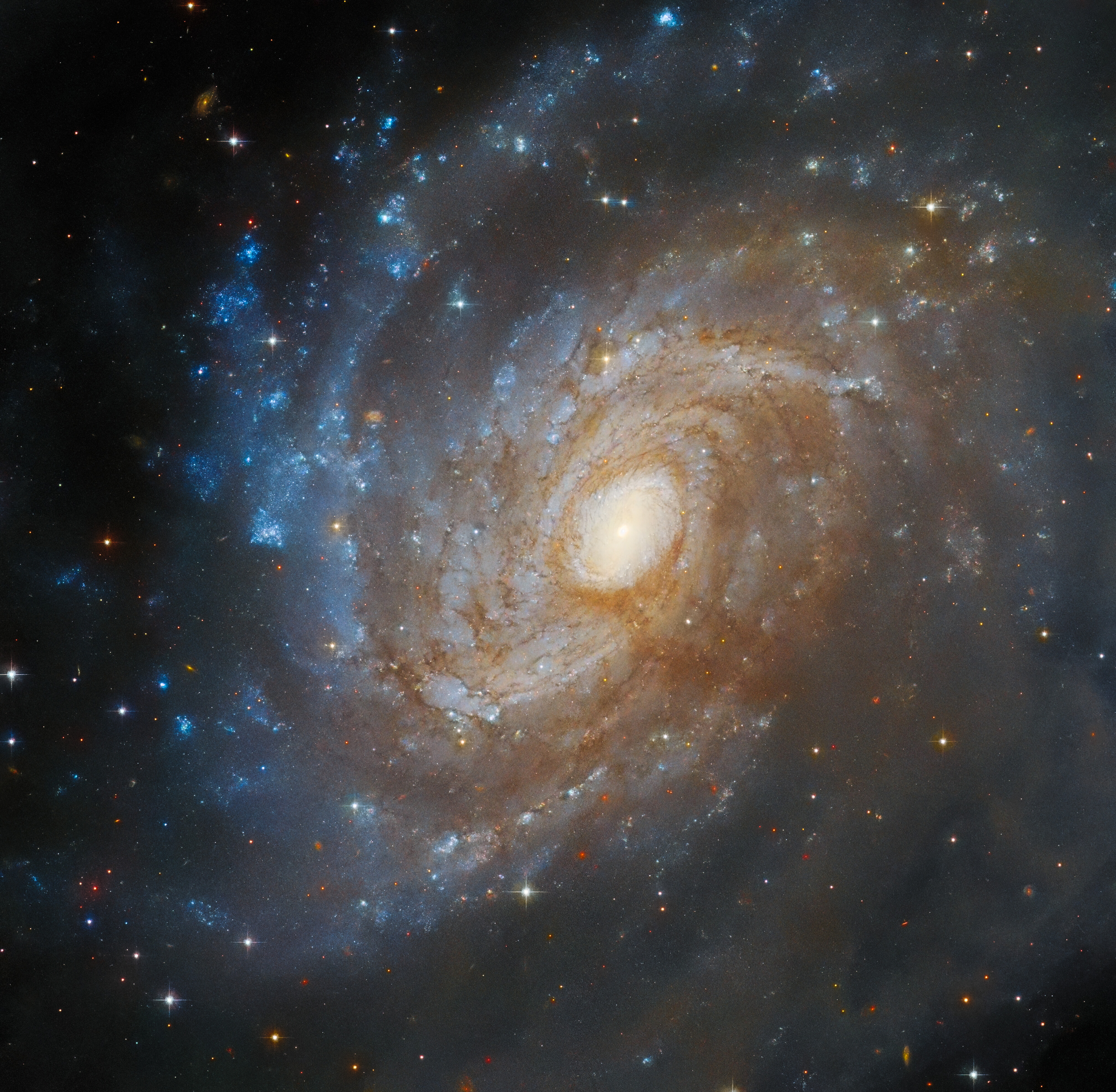FAQs
You've got Hubble questions; we've got Hubble answers. Get the responses to popular questions about how the telescope works and and why its images look as they do.
Quick Facts
Hubble at Work
Where is the Hubble Space Telescope?
The Hubble Space Telescope orbits just above Earth’s atmosphere at an altitude of approximately 320 miles (515 km). Hubble orbits at a speed of 17,000 miles per hour (27,000 kph) and completes one orbit approximately every 95 minutes. Hubble gets clear images because it’s above Earth’s atmosphere, not because it travels or flies closer to cosmic objects.
Hubble isn’t that far away, but its location above the murky atmosphere allows the telescope to get a clear view of the universe. Earth’s atmosphere distorts and blurs light, and absorbs certain wavelengths of the electromagnetic spectrum. The atmosphere helps protect us from harmful radiation, but also makes it difficult for ground-based telescopes to get sharp images of cosmic objects.
How does Hubble move and rotate?
To change pointing direction, Hubble uses Newton’s third law, which states that every action has an equal and opposite reaction. Hubble spins four internal wheels weighing about 100 lbs (45 kg). When spun in a clockwise direction, the spacecraft itself will turn counterclockwise. All four wheels are oriented at a different angle so that Hubble can be spun around all three of its axes. The spacecraft turns at about the speed of a minute hand on a clock, taking about 15 minutes to turn 90 degrees.
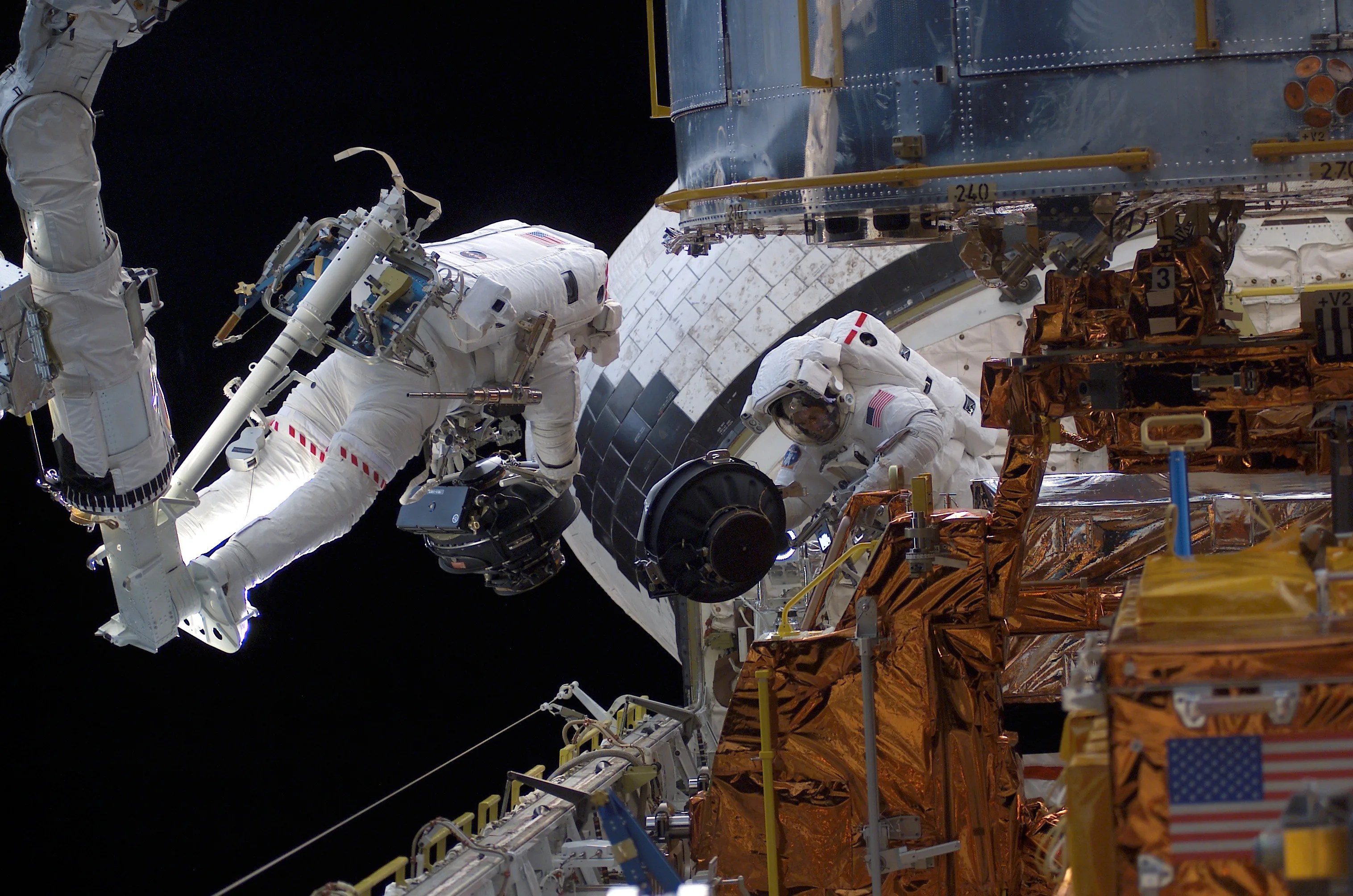
Hubble also has four Magnetic Torquer Bars. These are eight-foot-long magnets that can be turned on or off. Like a compass needle that gets pulled toward the north pole, they use the Earth’s magnetic field to pull or push Hubble along its axes in the desired direction.
How was Hubble repaired and upgraded while in space?
NASA’s space shuttle program made it possible for Hubble to be deployed and revisited several times in space by astronauts. Once in orbit around Earth, the space shuttle matched the speed of Hubble’s orbit to rendezvous with the telescope. Hubble was captured by the space shuttle’s robotic arm, and clamped into the cargo bay while astronauts completed extravehicular activities or “spacewalks” to manually make repairs and installations. Then, the shuttle would release the telescope back into orbit.
How do the mirror and instruments stay protected from dust and debris in space?
The main mirror and instruments are located deep within the tube of the telescope, which helps keep any stray particles away. Some particles do appear on some of the “pickoff mirrors,” which redirect light to the scientific instruments, but not enough to cause significant issues.
Are there any planned future human or robotic servicing missions planned for Hubble?
No. With the retirement of the space shuttle, there is currently no capability to service Hubble.
How long is Hubble expected to remain operational?
When Hubble launched in 1990, it was expected to have a lifespan of about 15 years. Largely because of five successful astronaut servicing missions to the telescope, Hubble’s technology was upgraded and improved, and the telescope remains scientifically productive to this day. All indications are that the telescope will continue operating into the late 2020s and possibly beyond.
What will happen to Hubble when the telescope is no longer operational? Will it return to Earth?
Hubble is not expected to re-enter Earth's atmosphere until the mid to late 2030s at the earliest. Due to a force called atmospheric drag, which affects the orbits of satellites like Hubble in low-Earth orbit, Hubble’s altitude is slowly decreasing. A propulsion module will eventually be attached to the telescope to complete either a controlled reentry into the south Pacific ocean, or to boost Hubble into a much higher orbit to keep the inoperative telescope aloft for several more decades.
Is the James Webb Space Telescope replacing Hubble?
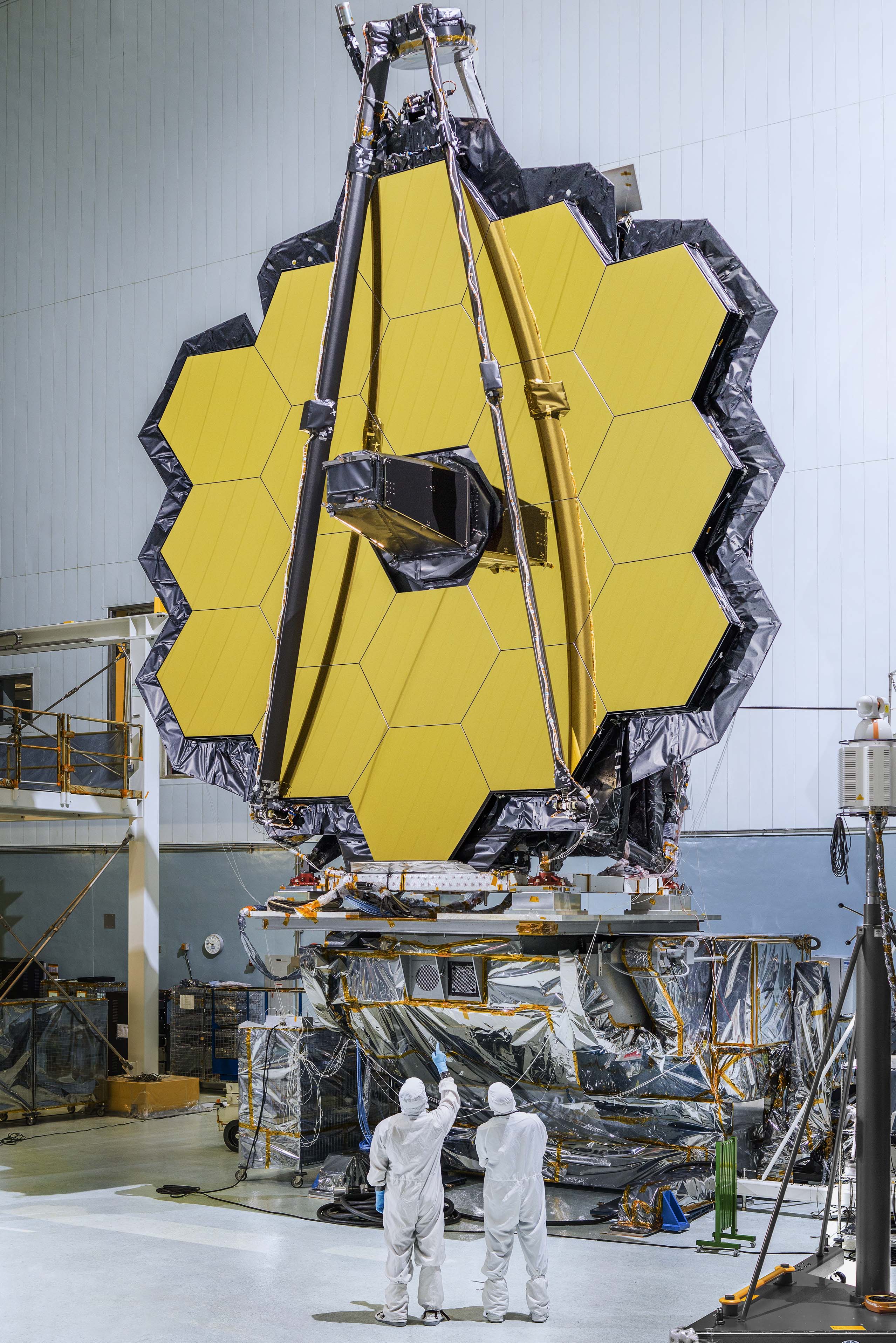
A common misconception is that the James Webb Space Telescope would “replace” Hubble. However, Webb has different capabilities than Hubble (see: Hubble vs. Webb), and the goal is for both telescopes to operate at the same time to conduct joint observations for several years. In some ways, Webb will be Hubble’s successor; for instance, Webb is designed to make observations solely in infrared wavelengths, meaning it will see farther into the universe, both “back in time” and through clouds of dust, to learn about stellar and galactic evolution, planet formation, and more.
Webb launched into orbit on Dec. 25, 2021.
What has the Hubble mission cost?
The Hubble mission has cost approximately $16 billion (adjusted for inflation to 2021 dollars) since its official start in 1977. This does not include the cost of space shuttle operations for Hubble’s deployment and servicing missions. The breakdown of budget by year can be found in appendix A of the book Not Yet Imagined.
Hubble Observations
How are images taken by Hubble processed? Are the colors real?
The Hubble Space Telescope is equipped with cameras that take images over a broad range of wavelengths. Hubble’s images are recorded in grayscale, but scientists can create a composite color image by taking exposures using different color filters on the telescope, assigning a color to each filter that corresponds to the wavelength of that filter, and combining the images. Sometimes, parts of images are assigned colors to visually show what isn’t visible to the human eye (for example, infrared wavelengths that your eye cannot detect), or to highlight the presence of certain elements.
Where are Hubble’s raw, unedited images?
The instrument data from which images are produced can be found in the Hubble Legacy Archive at hla.stsci.edu.
How far can Hubble see?
The farthest observation that Hubble has made to date is of the galaxy GN-z11, which is located about 13.4 billion light-years away.
Why do some Hubble images have missing, blank portions?
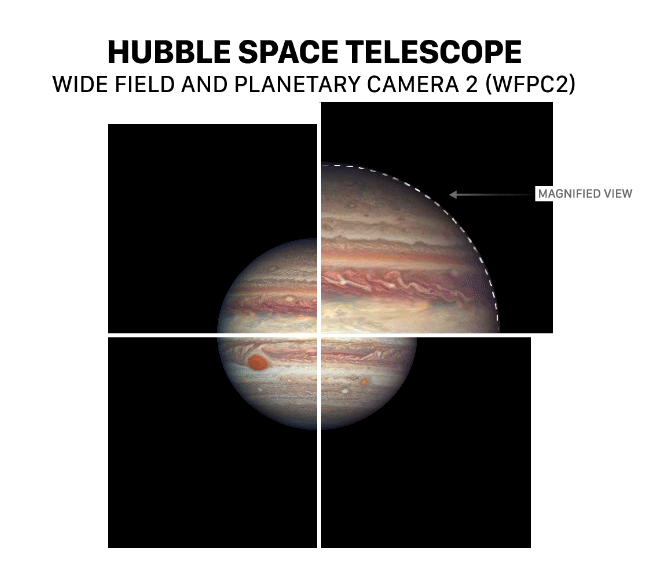
A previous camera installed on Hubble, called the Wide Field and Planetary Camera 2 (WFPC2), produced a “step” effect on many images. The dark regions or “missing” parts of those images are simply portions that have no Hubble data. Three of the camera’s four light detectors imaged “wide fields,” while the fourth detector (PC for planetary camera) had higher resolution but covered a smaller portion of the sky. With all four combined, the “step” effect resulted, meaning there are areas where Hubble observations were not taken.
Who decides what Hubble looks at?
The Space Telescope Science Institute (STScI) is located in Baltimore, Maryland and oversees Hubble’s science operations. STScI manages the selection process of proposals to use Hubble, schedules the resulting observations, processes the data, and so forth.
Time with Hubble is a scarce resource and highly competitive. Approximately 150 scientists from around the world evaluate and rank proposals as part of the Time Allocation Committee. The proposals are evaluated based on their scientific merit, and the committee’s recommended selection is then forwarded to the STScI director for final approval. Ten percent of Hubble’s observation time is also set aside for discretionary purposes as decided by the director. Observations such as the Hubble deep fields and the Hubble Frontier Fields have come from the director’s discretionary time.
Why can’t Hubble make observations of Earth?
Hubble’s instruments are made to see faint objects, so the bright Earth could damage them. In addition, the Earth moves too quickly below Hubble, making it difficult to stay on a particular location.
WFPC2 was replaced during Hubble’s last servicing mission in 2009.
What does “M” or “NGC” mean in the names of cosmic objects?
Chances are, you’ve read captions and seen images of cosmic objects (like galaxies or nebulae) that are named “M” or “NGC” followed by a number. The letter “M” references the Messier catalog, which is a compilation of astronomical objects that can be seen from Earth’s Northern Hemisphere. It was created starting in the 18th century by astronomer Charles Messier. For example, spiral galaxy M100 is the 100th object listed in the Messier catalog.
The letters “NGC” stand for New General Catalogue (full title: New General Catalogue of Nebulae and Clusters of Stars), which was compiled in 1888 by astronomer John Louis Emil Dreyer.

